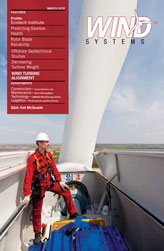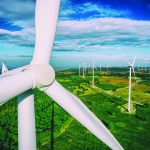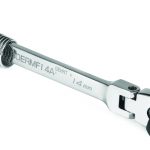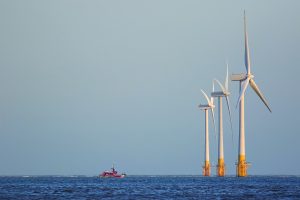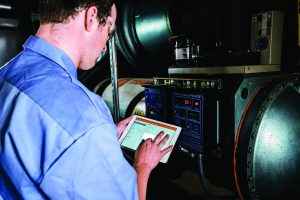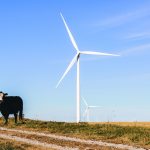Wind park maintenance, as we learned last month, can be quite the rigging challenge. If we focus on the flip side of the coin, wind park construction, we will see that rigging challenges exist here as well. This month we will take a deeper look behind the scenes of rigging. We are going to learn about rigging concepts that must be taken into consideration for the lift to be safe. Fundamentally, most of the objects we hoist are the same. Their shape, weight, and rigging may change, but the load will always reside under the hook. To safely hoist wind park components, we must always be mindful of this. Each component has a different CG or hoisting requirement to ensure that the component will stay level. This can turn a relatively normal lift into a more-complex procedure. When we hoist a wind tower section, one manufacture requires our rigging to span the whole tower section while another allows the use of two cranes. Before we go deeper into those we need to learn a few rigging basics.
 There is science and math at the core of all rigging techniques. It is crucial to learn and understand how sling loadings can drastically change with only a few alterations. Behind the scenes, we have load angle factors that we must consider when lifting wind turbine components. When your slings are perpendicular to a load you have a load angle multiplier (LAM) of 1. Your LAM is determined by the length of the sling divided by the vertical height it covers. Secondly, you multiply that by the weight of the load—we assume the weight is equally distributed between the amount of slings used. Example: if you have two cranes lifting a 50-ton wind tower section, then each of the two slings would have 25 tons of tension. As you decrease the angle of your slings—i.e. go below 90 degrees—your sling tensions increase. If we have the same 50-ton wind tower section and change the angle to 60 degrees, or a LAM of 1.155, the sling tensions increase to approximately 29 tons. Those four extra tons of sling tension on each side can crush, bend, or collapse a wind turbine section in seconds.
There is science and math at the core of all rigging techniques. It is crucial to learn and understand how sling loadings can drastically change with only a few alterations. Behind the scenes, we have load angle factors that we must consider when lifting wind turbine components. When your slings are perpendicular to a load you have a load angle multiplier (LAM) of 1. Your LAM is determined by the length of the sling divided by the vertical height it covers. Secondly, you multiply that by the weight of the load—we assume the weight is equally distributed between the amount of slings used. Example: if you have two cranes lifting a 50-ton wind tower section, then each of the two slings would have 25 tons of tension. As you decrease the angle of your slings—i.e. go below 90 degrees—your sling tensions increase. If we have the same 50-ton wind tower section and change the angle to 60 degrees, or a LAM of 1.155, the sling tensions increase to approximately 29 tons. Those four extra tons of sling tension on each side can crush, bend, or collapse a wind turbine section in seconds.
To overcome this we have two options, depending on the manufacture of the tower section. The first manufacture will require you to use two cranes in a tandem pick. This ensures that we have a LAM of 1 and cannot collapse the wind tower section. This can be accomplished with a pair of 60-ton cranes. The second manufacture will require us to use one crane. To avoid collapsing the wind tower section we have to use an 80-foot spreader bar to ensure we safely lift the tower section flat. The spreader bar ensures that rigging below the bar is perpendicular to the bar, meaning the odds of crushing the load or bending the load are non-existent. The downside to this is that, instead of two 60-ton cranes, we must use one 300-ton crane. The reason lies in the LAM. When we use multiple slings we always aim for the perfect -60, 60 ,60- triangle in our rigging. This is the safest and easiest way to ensure that our sling tensions are known. The best way to make sure you have a perfect triangle is to have your sling leg span the distance of the load. Herein lies why there is such a drastic change in crane sizes needed to hoist wind tower sections.
When we use one crane we need to have at minimum 80 feet of boom out—this is the length of the rigging and wind tower section. Typically, it will require around 150 feet of boom. When you add the manufacture’s safety factor and the amount of boom required because of the rigging lengths, you are now using a 300-ton or better crane. Conversely, if the manufacture allows, we can use two cranes. As stated above, this requires a pair of 60-ton cranes or better.
Crane Service has been in the heavy hoisting and rigging industry for 52 years. We are blessed to have one of the best equipment managers in the business. Fred Hamby, has over 30 years of heavy rigging experience and has traveled the world teaching what he has learned in crane and rigging. Every piece of the hoisting puzzle is crucial, which is why we have a dedicated rigging team that thoroughly goes over our rigging.
















